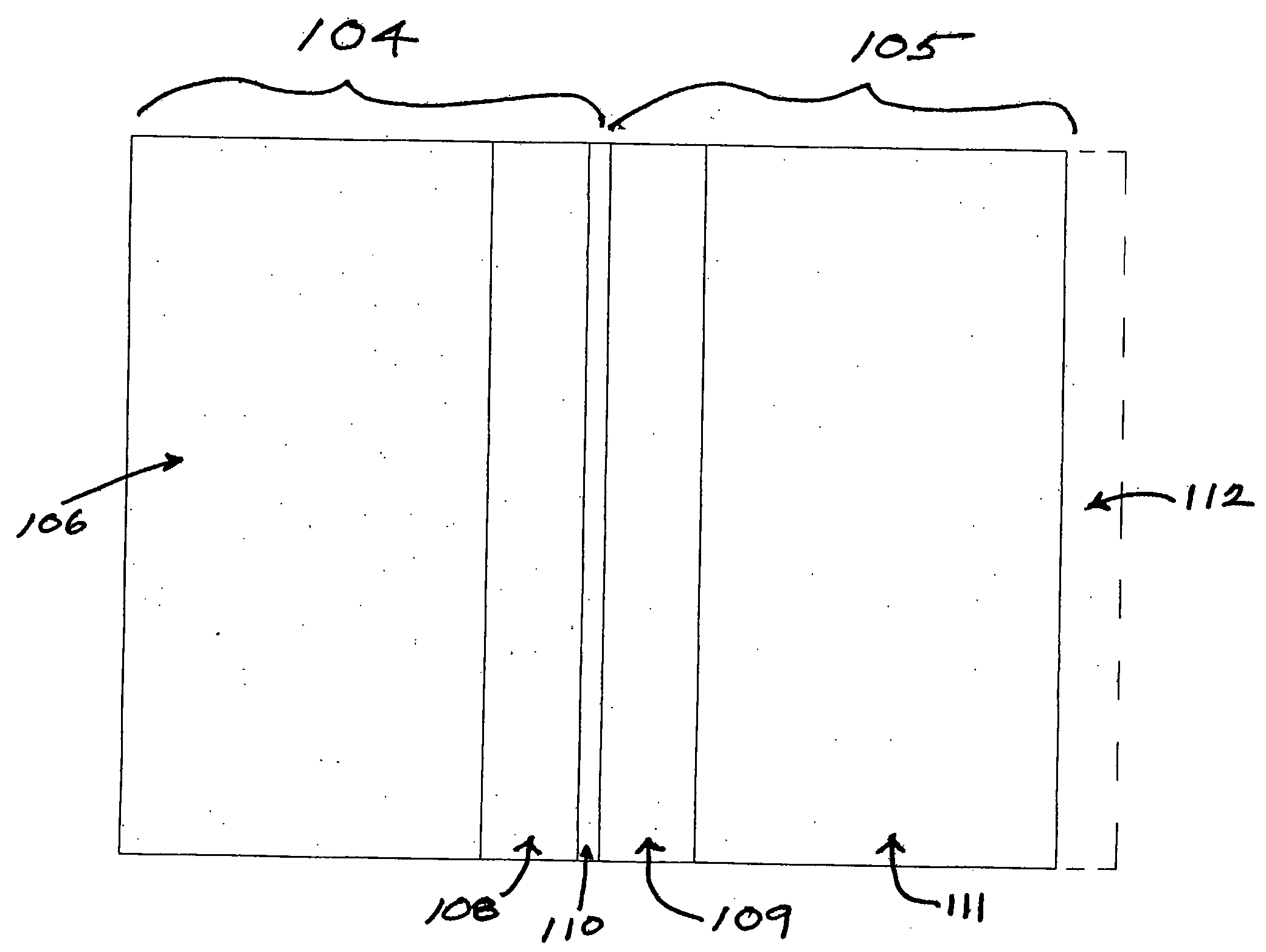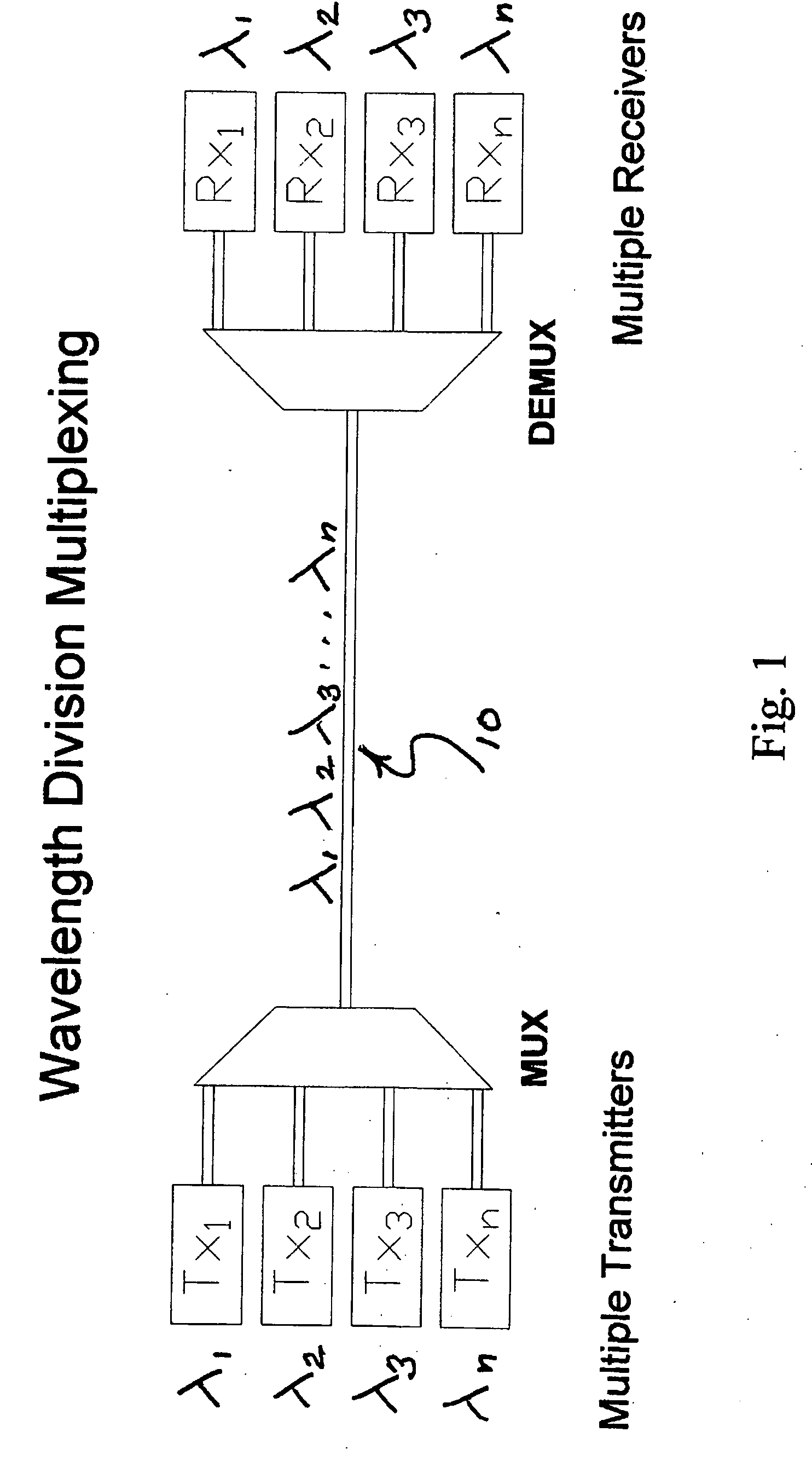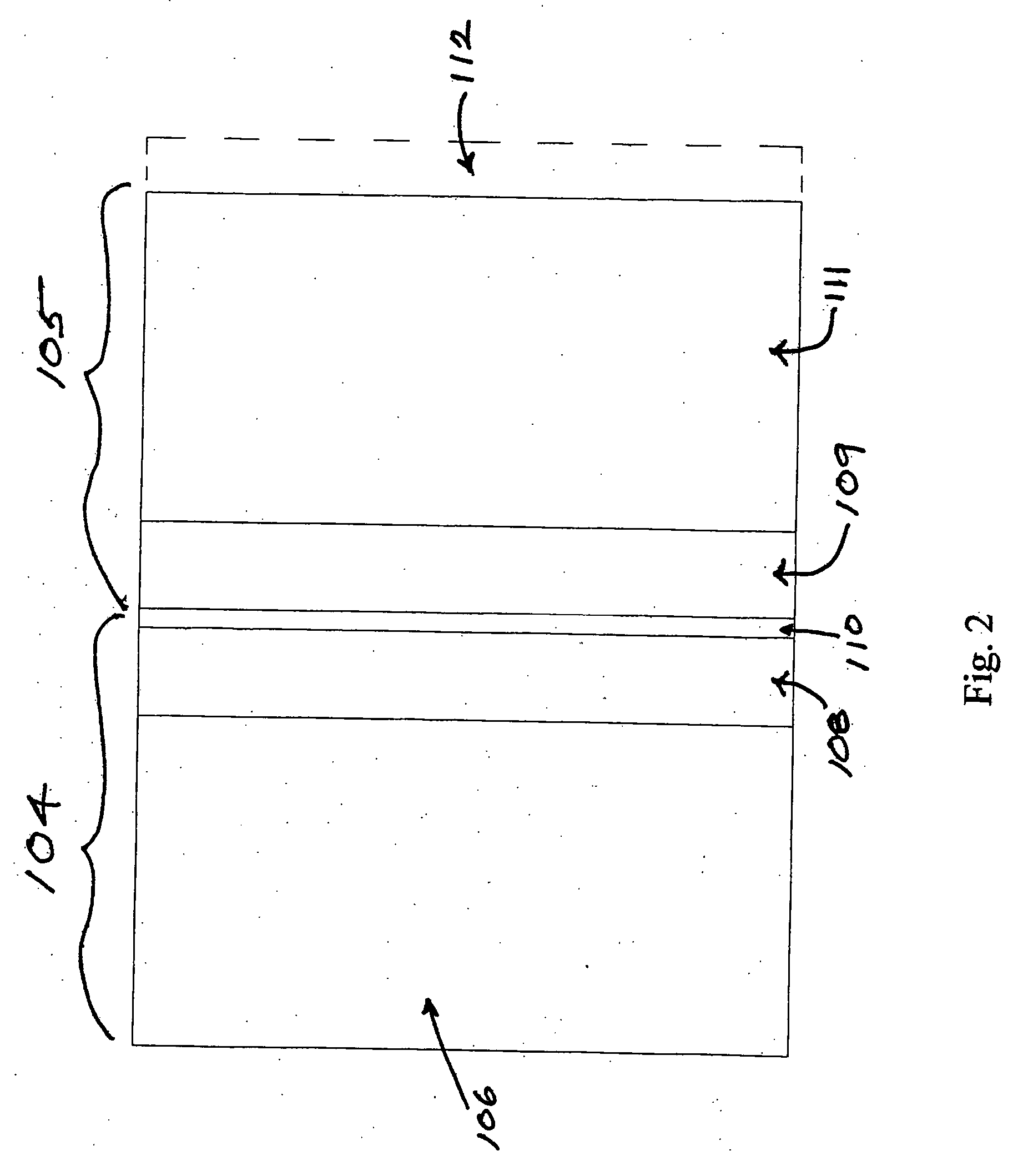High dispersion diffraction grating including multiple holographic optical elements
a holographic optical element and high dispersion technology, applied in the field of diffraction gratings, can solve the problems of complex overall system, difficult arrays, practical upper limit of arrayed waveguides, etc., and achieve the effects of reducing pdl, reducing complexity, and reducing complexity
- Summary
- Abstract
- Description
- Claims
- Application Information
AI Technical Summary
Benefits of technology
Problems solved by technology
Method used
Image
Examples
Embodiment Construction
[0043] The term “transparent” is used herein with reference to an optical element (or component thereof) to denote transmissive to electromagnetic radiation that the optical element is designed to transmit and / or reflect.
[0044] The expression “high dispersion” is used herein with reference to the inventive multi-HOE grating (e.g., to indicate that an embodiment of the inventive grating is configured to diffract incident radiation with “high dispersion”) to denote that the inventive grating diffracts incident radiation with greater dispersion than its constituent Dickson grating (or one of its constituent Dickson gratings) would diffract the same radiation.
[0045]FIG. 1 is a block diagram of the Wavelength Division Multiplexing portion of a telecommunications system. The incoming beams from multiple sources (Tx1, Tx2, Tx3, Txn) with corresponding multiple carrier wavelengths (λ1, λ2, λ3, λn) are combined into a single beam in a multiplexer (MUX) and transmitted along a single optica...
PUM
 Login to View More
Login to View More Abstract
Description
Claims
Application Information
 Login to View More
Login to View More - R&D
- Intellectual Property
- Life Sciences
- Materials
- Tech Scout
- Unparalleled Data Quality
- Higher Quality Content
- 60% Fewer Hallucinations
Browse by: Latest US Patents, China's latest patents, Technical Efficacy Thesaurus, Application Domain, Technology Topic, Popular Technical Reports.
© 2025 PatSnap. All rights reserved.Legal|Privacy policy|Modern Slavery Act Transparency Statement|Sitemap|About US| Contact US: help@patsnap.com



